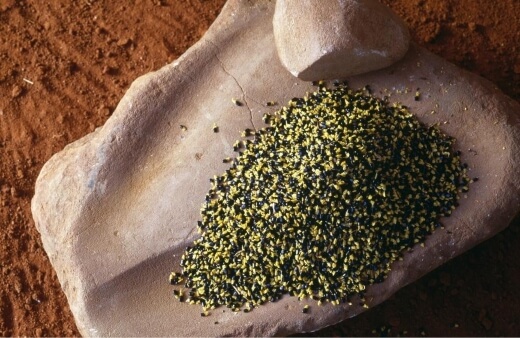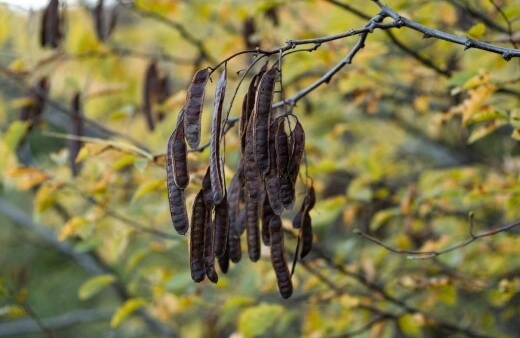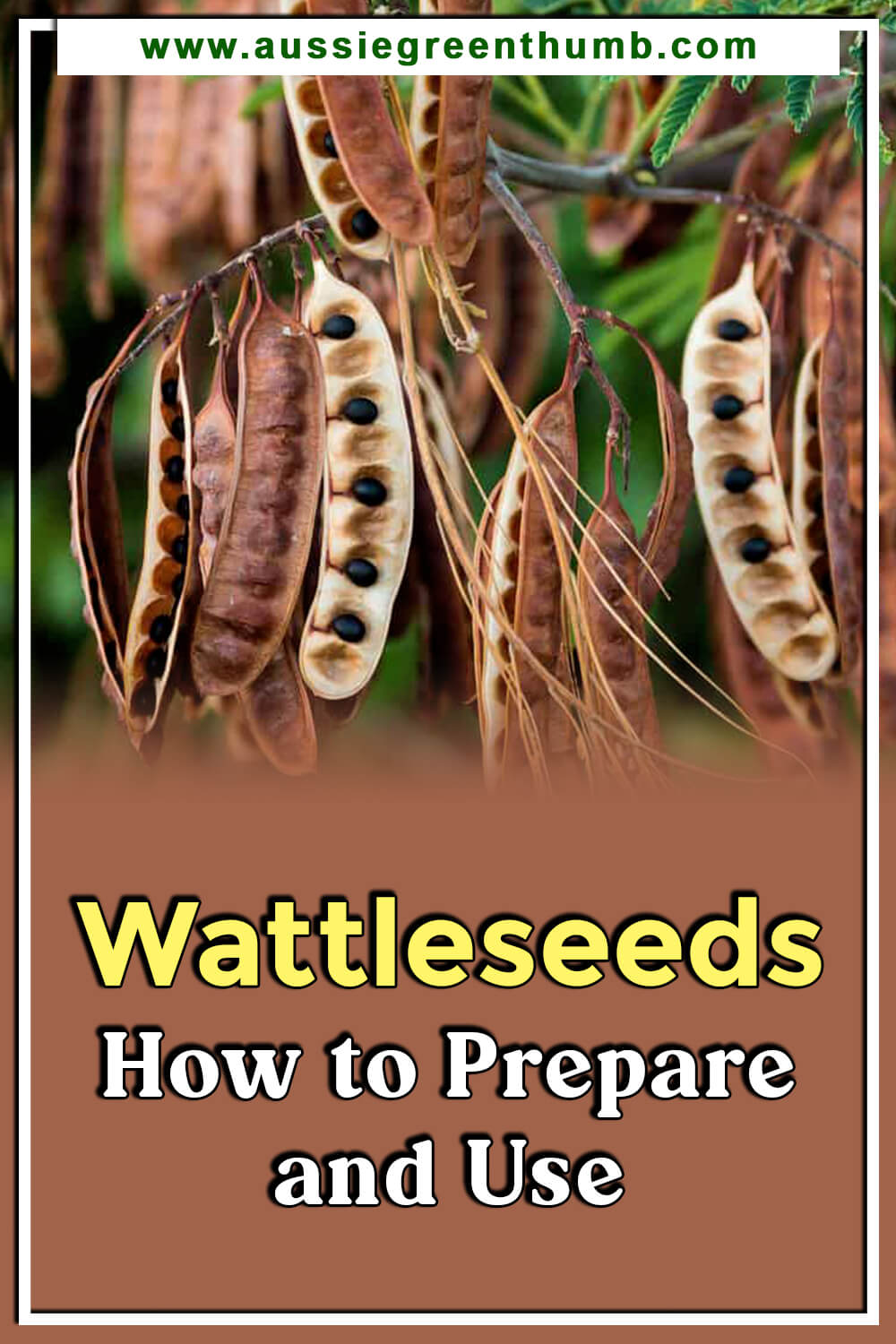Wattleseed has been used as an edible forage crop in Australia since before recorded human history, the tiny seeds are milled down into a dark flour, or eaten fresh.
In this article, we’ll look at how to grow your own wattleseed from the wattle tree, or acacia, as it is better known, and how to use it to flavour foods.
More...
What is Wattleseed?

Wattleseed is the seed of the acacia tree. There are over 900 species of Acacia native to Australia, all with seeds held in their pods that grow shortly after flowering in winter and spring.
Around 60 of these are known to be edible, while 50 are known to be toxic, and the other 830 untested. Risks when eating unrecognised wattleseed will range from mild symptoms of unwell to even causing death.
So make sure to be extremely careful and know which acacia you are getting your wattleseeds from before eating. When harvested, wattleseed looks like long pods of black and yellow bi-coloured beans, which develop in neat rows inside long pale green pods.
Can you eat wattleseed?
Wattleseed is the edible seed of around 60 species of Acacia. For the species recognised as safe, it is completely safe to eat raw as a bush tucker, but taste much better cooked. Some Acacias also produce edible sap, but be sure to get to know the safe species or Acacia more thoroughly before experimenting with bush tucker.
When roasted, wattleseed has a flavour somewhere between chocolate and mild coffee so is often used as a roast ground ingredient in the place of spice to warm up desserts and baking.
As well as holding the flavour of coffee, ground wattleseed also makes an excellent caffeine-free coffee alternative, stewed with hot water for 5 minutes in a cafetiere.
How to Prepare Wattleseed
Wattleseed is safe to eat raw, but its flavour comes out best when it is roasted. Once roasted, wattleseed is tough, so needs to be ground up to use as a spice to flavour dishes rather than providing their body.
There are two ways to prepare wattleseed, with one being significantly better for storage, while the other is perfect for a quick fix.

Roasting wattleseed
To roast wattleseed, line a baking tray with greaseproof paper, and place it in a low oven for ten minutes to heat up. Lay an even layer of dried wattleseeds over the tray, and bake until evenly brown.
Once baked, leave to cool on greaseproof paper to prevent steam from building up. When the seeds have cooled to room temperature simply grind them in a food processor or pestle and mortar. The powder should be kept in an air-tight jar for up to six months.
Dry Fry Wattleseed
Dry frying wattleseed is just like making popcorn – heat a pan, throw in your wattleseed and keep it moving. Do not use a lid as humidity builds and will encourage them to pop like popcorn.
Drying wattleseed in this way produces a similar flavour to roasting but is significantly quicker – however, you need to use wattleseed prepared like this straight away as it won’t keep for more than a week.
Wattleseeds Frequently Asked Questions

What flavour is wattleseed?
Wattleseed tastes similar to coffee but with a milder, nutty flavour that is usually described as chocolatey. Different species do have different flavour profiles though, with most acacia producing wattleseed that tastes more like wheat and dried fruit.
What is wattleseed used for?
When dried and ground, wattleseed is used as a flavouring for cakes, biscuits and breads, but also works well as a thickening agent for casseroles and curries, where the earthy sweetness can help to carry stronger, hotter spices.
What do I use instead of wattleseed?
The only real alternative to wattleseed is ground coffee, which has a similar flavour but doesn’t share the same rounded nutty tones, or sweetness of wattle.
To try and replicate the flavour of wattleseeds, soak raisins in cooking water and use the water instead of plain water, then mix cinnamon and ground coffee into the mix.
Is wattleseed a spice?
Wattleseed is not strictly a spice as it is the ground dried seed of a tree that can be also used as a green vegetable. Despite its physicality though it is typically used as a spice in many traditional aboriginal dishes, and modern cooking.
Wrapping Up Our Wattleseeds Guide
Wattleseed, the tree-forming member of the pea and bean family, is a wonderful addition to any garden, and is an excellent bush tucker for foraging, with distinct leaves and flowers that make it easy to spot against other potentially toxic foods.
Wattleseed is a fast-growing tree that quickly fills empty spaces in the garden as well as helps to attract native bees. Why not try mixing wattleseed into your cakes instead of cinnamon next time you’re baking, or if you’re not into bush tucker, just try growing your own tree from seed.

Published on July 3, 2022 by Nathan Schwartz
Last Updated on December 18, 2023





I would like to know more about the use of wattle seed production /harvesting.
Hey Susan,
Thank you for your comment. Could you please expand on what you are wanting to know, so we can make sure to answer it correctly, thanks.
Gary Clarke
This article has some errors.
1. There are 900+ native species of acacia in Australia.
2. About 60-70 of those are known to be edible.
3. The other ~830 have unknown or untested edibility status
4. Some species have known toxicity (e.g. A. hakeoides, personally sampled by me, and A. georgiana which has fluoroacetates [1080 poison] which WILL KILL YOU IF YOU EAT IT; there are more than 50 others with known toxicity)
Other than that, thanks for popularising this tasty native.
Cheers,
JP
Bush Food Forager
Hey JP,
Thanks for the insights mate, we are now updating the article to make sure it is up to date with all of the current information available.
Cheers,
Nathan